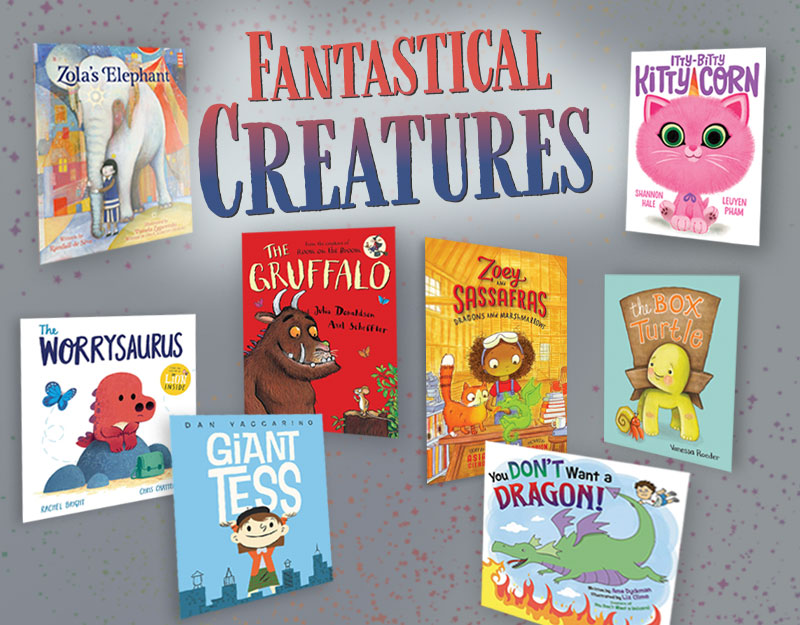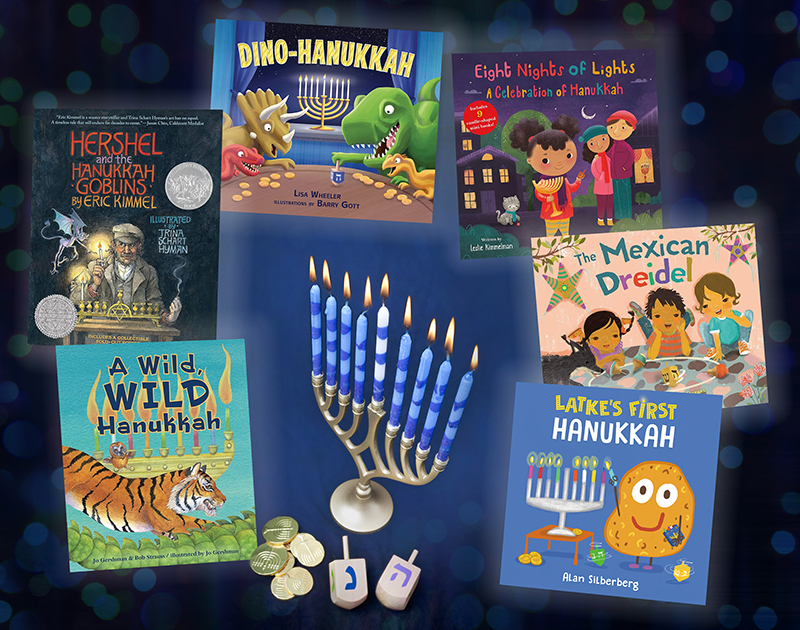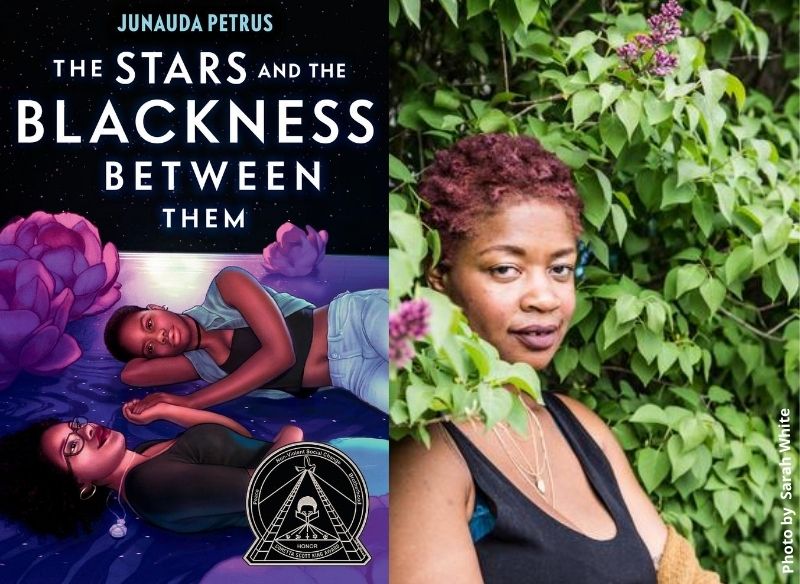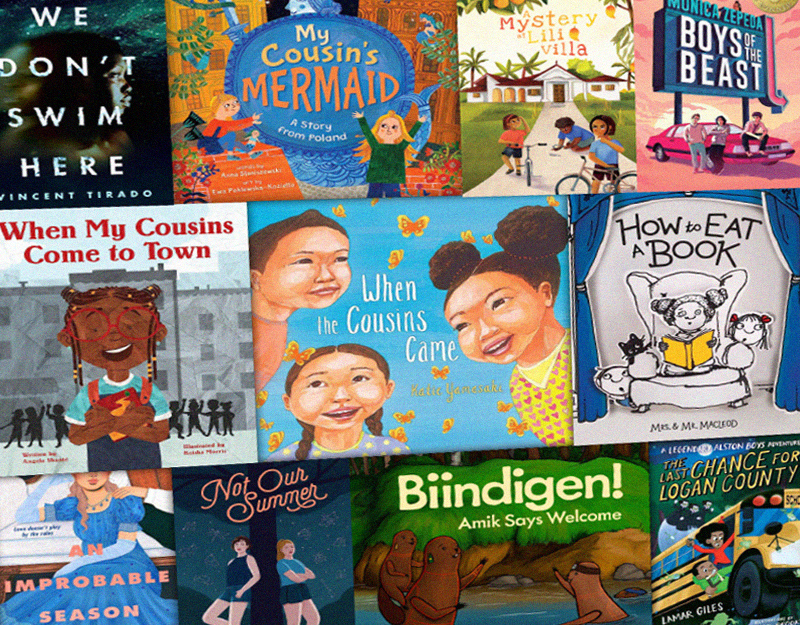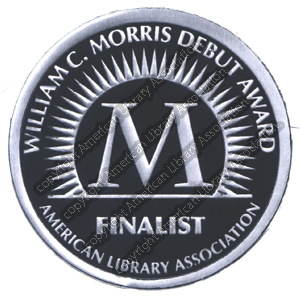Explore the Intersection of Science and Stories in The Girl Who Named Pluto

Written by Alice B. McGinty; illustrated by Elizabeth Haidle
Published by Schwartz and Wade Books
ISBN # 978-1-5247-6831-7
Book Review
In the year 1930, while sitting at the breakfast table with her grandfather, twelve-year-old Venetia Burney learned of the discovery of a new planet far from the sun. Using her knowledge of mythology and its links to science, she suggested the name Pluto for the Roman god of the Underworld. The Girl Who Named Pluto documents Venetia’s life story with emphasis on her great interest in the solar system and Greek and Roman myths. Narrated chronologically, the book ends with Venetia visiting the Observatory Science Centre in England when she was nearly 89 years old and where she finally viewed Pluto through a telescope for the first time. Inspiring and entertaining, the book uses the power of narrative to pay tribute to the only child to have named a planet. Backmatter includes an informative Author’s Note and Selected Bibliography. The muted palette of Elizabeth Haidle’s illustrations complement the historical context of the story. Many pages are drawn in grayscale with Venetia as the sole figure in red, offering young readers visual clues to the significance of Venetia as a little known, but valuable, figure. Ripe with many opportunities for content-rich learning opportunities, The Girl Who Named Pluto is a welcome addition to the study of fictionalized biography, the solar system, and the power of interdisciplinary thinking.
Teaching Ideas and Invitations
Grades PreK-5
Planet Walk: Experiential Learning. Follow the example of Venetia’s teacher, Miss Claxton, to help students understand the solar system by creating a class model through a planet walk. Following a read aloud of The Girl Who Named Pluto, draw a sun on your classroom whiteboard and lead students on a walk around your school’s neighborhood to lay down seeds and balls that represent the planets, their relative size, and their distance from the sun. It will take approximately ¾ mile. As Miss Claxton did, give students balls of clay to recreate the model at a later time or at home. To extend the experience, download the Sagan Planet Walk app or view with students NASA Quest’s Virtual Field Trip “Hike the Solar System”.
ADVERTISEMENT
ADVERTISEMENT
Stories and Science. When Venetia heard about the discovery of a new planet she imagined the frozen, dark, lifeless, far-off planet and made connections to how the Underworld was described in Greek and Roman mythology. She also knew that many planets and constellations were already named for Roman gods–Neptune, Mars, Jupiter, Mercury, and Uranus. She was able to apply her knowledge of stories to the naming of scientific discoveries. Deepen students’ knowledge of mythology by having them select planets and constellations that they want to read the corresponding myth for in partnerships or science story teams. Have students present the reasons why they think these planets and constellations were named for Roman gods based on their location in the solar system and what they learned from the stories of the gods.
Who Will I Be?: Researching Lesser Known Historical Figures. Venetia Burney is a little known historical figure. The publishing of The Girl Who Named Pluto broadens the available life stories for students to study. Gather other narrative/fictional biographies for students to learn from and to broaden their imaginations about who they can be. If your focus is on the solar system, consider gathering books like Mae Among the Stars by Roda Ahmed, Counting on Katherine: How Katherine Johnson Saved Apollo 13 by Helaine Becker, Hidden Figures: The True Story of Four Black Women and the Space Race by Margot Lee Shetterly, and Carl Sagan: The Boy Who Looked to the Stars by Adya Jha. At The Classroom Bookshelf, we have written about many lesser known historical figures including Fast Enough: Bessie Stringfield’s First Ride by Joel Christian Gill and A Splash of Red: The Life and Art of Horace Pippin by Jen Bryant.
Color for Effect. Readers will immediately notice the color choices Elizabeth Haidle made in illustrating the scenes in muted grays and sepia tones with Venetia in a reddish-orange hue. Discuss with students the ways in which the color choices influence their understanding of who the story is about, what is important, and how we know this took place in the past. Extend student understanding of the influence of color by gathering other books that use color to show significance such as Aaron Becker’s Journey trilogy, Kobi Yamada’s What Do You Do With a Chance?, and Lines by Suzy Lee. Encourage students to look back at their own writing and illustrations for places where they can add or remove color for effect.
Learning by Questioning. Venetia grew up in a home where questions were welcomed and encouraged. Each morning she brought her questions to the breakfast table and her grandfather, a librarian at Oxford University, answered as many as he could. Light up learning in your classroom with a brainstorming session composed entirely of questions. Challenge the class to generate 100 questions about anything and everything or about a single topic connected to your current science or social studies unit. Support students to initially just ask questions and then after the brainstorming session invite students to answer or research any questions that intrigue them. Support student wondering with a book like Just Right: Searching for the Goldilocks Planet by Curtis Manley.
ADVERTISEMENT
ADVERTISEMENT
Correspondence Then and Now. Venetia’s grandfather writes a letter to his friend at the Royal Astronomical Society who forwards Venetia’s idea for the naming of Pluto to astronomers at the Lowell Observatory in Flagstaff, Arizona. Research with students how long it would have taken for a trans-continental letter to arrive. If this took place today, how much faster do they think communication would be today? Brainstorm with students, using a Venn diagram or T chart, the ways people corresponded with one another in 1930 compared with today. Consider having students write letters to family members and friends to see how long it takes for them to receive their letters in the mail and how long it takes for them to reply.
To Be or Not To Be a Planet? Debating Pluto as a Planet. When Venetia named Pluto it was considered a planet. The back matter explains that as telescopes became stronger scientists found an object that appeared to be larger than Pluto. This discovery led scientists to rethink the definition of a planet and they made the decision to reclassify Pluto as a dwarf planet. Invite students to consider what constitutes a planet versus other celestial objects–scientists are still arguing about the definition of a planet. Research with students the debate about Pluto using books like Kathleen Kudlinkski’s Boy, Were We Wrong About the Solar System and other titles (see Further Investigations below) and have students take a side on whether they think Pluto should remain a planet.
Critical Literacy
Who Has Influence? The Impact of Power and Privilege. Venetia’s naming of Pluto is both remarkable and in some ways unsurprising given her social location as the granddaughter of an Oxford University librarian. The scholarly connections her grandfather had afforded Venetia more influence than other children may have had then or today. Discuss with students how the privilege of Venetia’s family gave her access to the astronomical societies in England and the United States. Do they think anyone could have named Pluto successfully in 1930? What about today? In what ways has the Internet empowered anyone to be a scholar, writer, and influence? If they had an idea for naming the next Planet X what steps would they take to make their voice heard? As an extension, research with students the ways in which people can purchase stars and name them.
Further Explorations
Online Resources
Is Pluto a Planet? Space.Com
https://www.space.com/41769-pluto-planet-definition-debate-rages-on.html
Why Isn’t Pluto a Planet Anymore? Space.Com
https://www.space.com/why-pluto-is-not-a-planet.html
Why Is Pluto No Longer a Planet: Popular Science
https://www.popsci.com/why-is-pluto-no-longer-planet/
Pluto: NASA Solar Exploration
https://solarsystem.nasa.gov/planets/dwarf-planets/pluto/overview/
Pluto: The Other Red Planet NASA
https://www.nasa.gov/nh/pluto-the-other-red-planet/
National Geographic Pluto Facts
https://www.nationalgeographic.com/science/space/solar-system/dwarf-planets-pluto-ceres/
Sagan Planet Walk Video
http://www.sciencenter.org/sagan-walk.html
NASA Hike the Solar System Video
Books
Ahmed, R. (2018). Mae among the stars. New York, NY: HarperCollins.
Becker, H. (2018). Counting on Katherine: How Katherine Collins saved Apollo 13. New York, NY: Henry Holt and Co.
Carney, E. (2012). National Geographic Readers Planets. National Geographic Children’s Books.
Halpern, P. (2004). Faraway worlds: Planets beyond our solar system. Watertown, MA: Charlesbridge.
Hamilton, M. & Driscoll, M. (2019). A child’s introduction to the night sky: The story of the stars, planets, and constellations–and how you can find them in the sky. New York, NY: Black Dog and Leventhal.
Jha, Adha. (2019). Carl Sagan: The boy who looked to the stars. Independently published.
Kudlinski, K. (2008). Boy, were we wrong about the solar system. Boston, MA: Dutton Books for Young Readers.
Landau, E. (2008). Pluto: From planet to dwarf. Chicago, IL: Children’s Press.
Manley, C. (2019). Just right: Searching for the Goldilocks planet. New York, NY: Roaring Brook Press.
Oseid, K. (2017). What we see in the stars: An illustrated tour of the night sky. Berkely, CA: Ten Speed Press.
Shetterly, M.L. (2018). Hidden figures: The true story of four black women and the space race. New York, NY: HarperCollins.
Taylor-Butler, C. (2008). Pluto: Dwarf planet. Scholastic News Nonfiction Readers. New York, NY: Scholastic.
Filed under: Fictionalized Biography, Nonfiction, Picture Books
About Katie Cunningham
Katie is a Professor of Literacy and English Education at Manhattanville College. There she is also the Director of the Advanced Certificate Program in Social and Emotional Learning and Whole Child Education. Her work focuses on children’s literature, joyful literacy methods, and literacy leadership. Katie is the author of Story: Still the Heart of Literacy Learning and co-author of Literacy Leadership in Changing Schools. Her book Start with Joy: Designing Literacy Learning for Student Happiness will be released September 2019. She is passionate about the power of stories to transform lives.
ADVERTISEMENT
ADVERTISEMENT
SLJ Blog Network
2024 Books from Pura Belpré Winners
In Memorium: The Great Étienne Delessert Passes Away
Winnie-The-Pooh | Review
Parsing Religion in Public Schools
Finding My Own Team Canteen, a cover reveal and guest post by Amalie Jahn
ADVERTISEMENT



